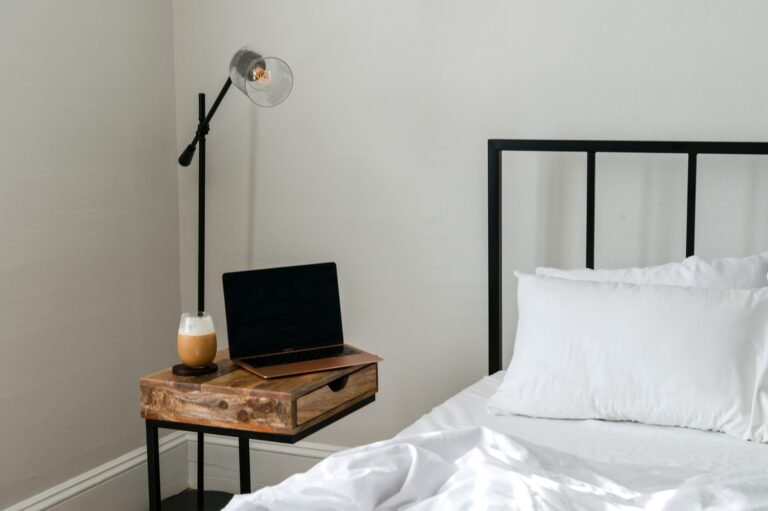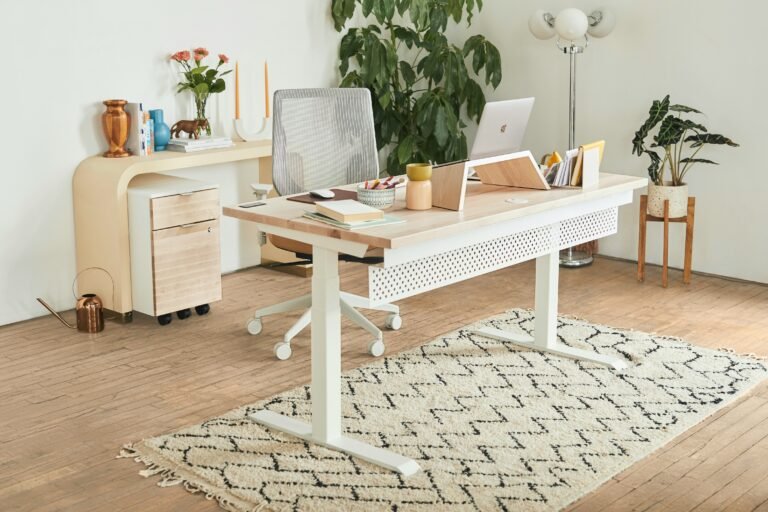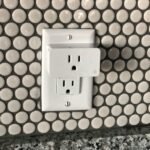Working from a laptop can be uncomfortable without the right support. Laptop desks and portable lap desks help you stay productive while maintaining good posture whether you’re on the couch, in bed or at a coffee table. This guide explains the different types of laptop desks and what features to look for so you can find a model that suits your needs.
Bring your ideas to life with pro‑grade visuals—4K and 360°, watermark‑free. Start free where available and design with confidence.
Trusted by professionals for faster approvals, clearer communication, and fewer meetings.
Free trial availability depends on region/store. Final terms and pricing appear at checkout. Disclosure: This article contains affiliate links. If you buy through our links, we may earn a small commission at no extra cost to you.
Laptop Desks and Lap Desks: How to Work Comfortably Anywhere
Working from a laptop on the couch, in bed, or at a coffee table is convenient, but it can quickly lead to strain in your neck, wrists, and lower back if your setup does not provide proper support. A good laptop desk or lap desk helps you stay productive while maintaining better posture. This article explains the different types of laptop desks, the most important features to look for, and simple tips to set up your workspace so you can work more comfortably for longer periods.
Types of Laptop Desks
Laptop desks come in several forms, each designed for different situations. Adjustable-height lap tables have legs that raise or lower so you can find the right working position. They are among the most stable choices for couches or beds, although they can be bulkier than other models. Foldable-leg lap desks collapse flat for quick storage and travel. These are lightweight and affordable but often have a more limited height range.
Tilting laptop stands allow you to angle your device for a clearer view and better ergonomics. They are excellent when paired with an external keyboard and mouse, but typing directly on a steeply tilted surface can strain your wrists. Cooling lap desks are useful if your computer tends to overheat. They may rely on vented surfaces made of aluminum or mesh, or they may include USB-powered fans to improve airflow.
For maximum stability, especially when working in bed, over-bed or sofa-side tables are the best option. These tables slide under your furniture to provide a secure surface at the right height. Organizer lap desks provide added convenience with built-in slots for tablets, phones, pens, or notes. They keep your essentials upright and within reach, although the typing area may be smaller on compact models.
Key Features to Look For
When choosing a laptop desk, consider how well it can be adjusted to your body and environment. Height is one of the most important factors. On a couch or armchair, a range of 7 to 16 inches usually allows your elbows to sit at a natural 90 to 100 degree angle. In bed, taller models that extend to 20 to 28 inches work best. Tilt is another critical factor. For typing, a flat to 10 degree surface is wrist-friendly. For viewing with an external keyboard, a steeper tilt of 15 to 45 degrees can help bring the screen to eye level.
Surface size matters as well. A 13 to 14 inch laptop typically requires at least a 12 by 16 inch platform, while a 15 to 16 inch laptop needs around 13 by 18 inches. If you use a mouse, make sure there is an additional 7 to 8 inches of width or a dedicated mouse pad area. Stability is equally important, so look for models with sturdy locks, broad feet, and anti-skid pads.
Material choice influences both durability and comfort. Aluminum and bamboo provide a sturdy, premium feel, while plastic options are lighter and more affordable. For cooling, passive ventilation with mesh or aluminum works for most users, while active fans help if your laptop runs hot. Comfort features such as memory foam or dual-cushion bases distribute pressure more evenly. Rounded front edges also reduce wrist and forearm strain.
Ergonomic Setup Tips
A laptop desk is most effective when used with proper posture. The top of your screen should be at or just below eye level, and the display should be about an arm’s length away. Keep your elbows close to your body and bent at about 90 to 100 degrees. Your wrists should stay straight, not bent upward. A slight recline of 100 to 120 degrees at the hips helps relieve spinal pressure, and your feet should remain supported on the floor or a cushion.
Adding small adjustments can make a big difference. On the couch, a lumbar pillow helps maintain the natural curve of your spine. In bed, a wedge pillow behind your back prevents neck strain. When working in a coffee shop, a compact stand combined with a folding keyboard and travel mouse allows you to raise your laptop screen without straining your wrists.
Common Mistakes and Fixes
One of the most common mistakes is typing on a steep tilt. Keep the typing angle at 10 to 15 degrees or less, or use an external keyboard if you need a higher tilt for the screen. Another mistake is blocking laptop vents on soft cushions. To prevent overheating, choose a vented desk surface or add spacer feet. If your desk feels too low, adjust the legs so your shoulders stay relaxed and your wrists straight.
Some users buy desks without enough room for a mouse. Always check dimensions to make sure the desk accommodates your setup. Wobbly legs are another issue, so opt for designs with metal locks, wide stances, and non-slip feet.
Budget and Value
Under 25 dollars, you will find basic lap pads or small foldable desks suited for occasional use. In the 25 to 60 dollar range, foldable-leg desks with moderate stability are common. Between 60 and 120 dollars, you can expect adjustable-height models with stronger locks, cooling options, and organizer features. Premium models above 120 dollars often provide over-bed or sofa-side designs with precise adjustments, making them ideal for multi-hour sessions.
Care and Longevity
Maintain your desk by tightening hinges and locks monthly to prevent wobble. Clean the surface with a damp cloth and avoid harsh chemicals, especially on bamboo or plastic. If your desk includes fans, clear dust from the grills every few months to keep them running efficiently. Always route cables neatly to avoid tripping hazards.
Accessibility Considerations
For people with arthritis or limited grip strength, look for models with large, textured knobs and one-touch locks. Anti-glare finishes and matte surfaces are helpful for users with sensitive vision. Left-handed users should confirm that mouse pad areas are reversible. Rounded edges and lips can also make desks safer in homes with children or pets.
The Bottom Line
Choosing the right laptop desk starts with your working scenario. Match the desk to where and how you use your laptop, then confirm the right height, tilt, surface size, and cooling. For longer sessions, stability and adjustability are essential. For travel, prioritize lightweight and foldable designs. When possible, pair your laptop desk with an external keyboard and mouse so you can raise your screen to eye level while keeping your wrists in a comfortable, neutral position.
Last updated on September 11, 2025







